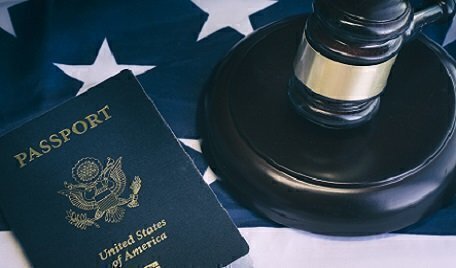Arguing that the Trump Administration is trying to get the Supreme Court to ensure “that every possible refugee is excluded” from the U.S., the state of Hawaii urged the Justices on Tuesday to allow some 24,000 of these foreign nationals to resettle here in coming weeks.
 Those are the only refugees seeking to flee to America who now have a formal promise from a refugee-relief agency to be resettled once they arrive, the new filing said.
Those are the only refugees seeking to flee to America who now have a formal promise from a refugee-relief agency to be resettled once they arrive, the new filing said.
Even if the court turns down the new plea by the Administration to exclude those, the challengers argued, the government still will have the authority under President Trump’s current “refugee ban” to keep out some 85 percent of all of the refugees worldwide who currently want to enter. That means about 175,000 would still be excluded, and the government even has stopped processing entry requests from almost all of those, the new filing argued. Those 175,000 do not have resettlement assurances.
The only issue before the Justices at this point is the near-term fate of the 24,000 refugees with such assurances, and whether the President’s March 6 executive order can be enforced against them for the next several weeks. The Justices at this point are not dealing with whether the Trump order is valid legally or constitutionally; the court is scheduled to take up that ultimate issue next month, in its new term. The Justices, though still in summer recess, are available to rule on the current dispute over interim enforcement of the Trump order.
Lawyers for Hawaii and others fighting the executive order that seeks to limit immigration of refugees, and also of foreign nationals from six Mideast nations, focused their new brief on the harm that they said would befall the 24,000 refugees, but also the relief agencies that have promised resettlement, if the new government request is granted.
The only refugees that the Administration wants allowed into the country under the Trump order are those who have close family ties in the U.S., and it takes that position only because the Supreme Court on June 26 said such individuals could not be excluded. The Administration’s preferred position, laid out in the Trump order, is that no refugees should be allowed to enter the U.S., from anywhere in the world, during a 120-day period while the government weighs refugee policy changes. That 120-day span is settled to run until late October.
The Supreme Court, in a later order, on July 19, temporarily allowed the government to keep out the 24,000 whose only tie to the U.S. is a resettlement promise until that question could be examined in lower courts.
However, last week the U.S. Court of Appeals for the Ninth Circuit interpreted the Justices’ actions so far on refugees to mean that those 24,000 should not be excluded, because their resettlement promise does give them a sufficient tie to this country. That is the ruling that the Administration on Monday asked the Justices to block.
Among other arguments that the challengers’ lawyers made in their answer Tuesday is that the government’s current position amounts to asking the Justices to settle in its favor, right now, its legal right to keep out those 24,000 individuals. But the legality of that issue is not before the Justices at this point, and will not be until the hearing on legality is held October 10, the answering brief said.
The controversy that is before the Justices right now does not include the right to entry of Mideast nationals who have close relatives in this country. The Trump executive order originally sought to exclude all foreign nationals from six nations with Muslim-majority populations, but the June 26 order by the Supreme Court temporarily cleared the way to enter for those with family ties here. The government is now allowing them in and is not asking the Justices to change that situation at this point.
Legendary journalist Lyle Denniston has written for us as a contributor since June 2011 and has covered the Supreme Court since 1958. His work also appears on lyldenlawnews.com.






